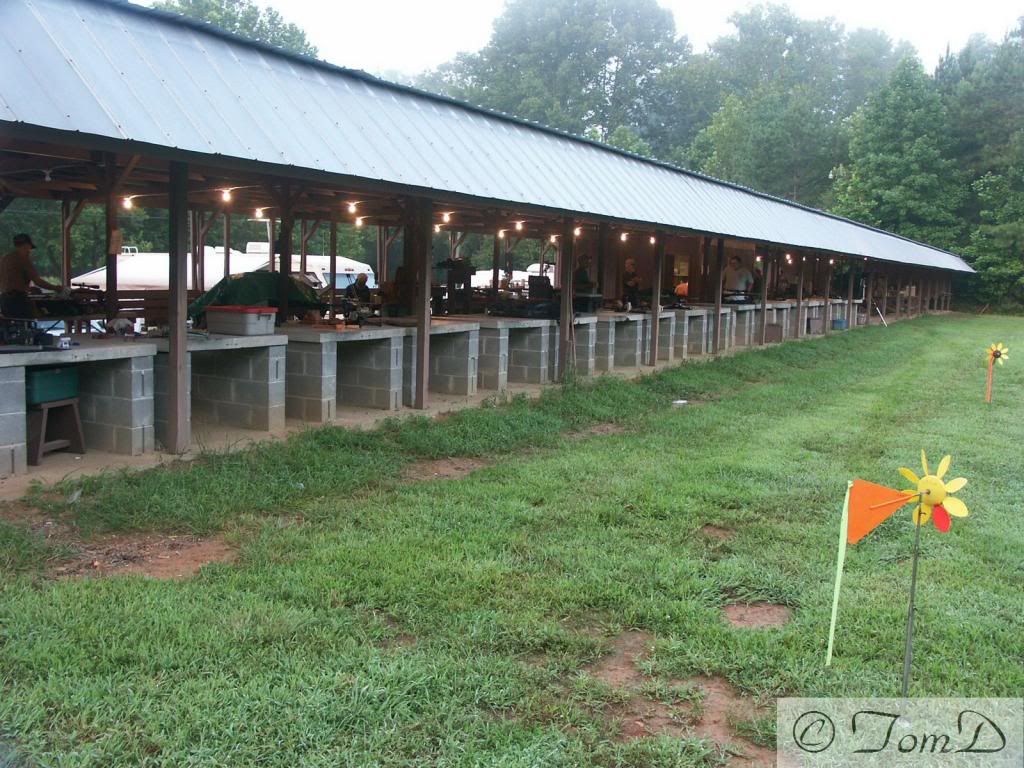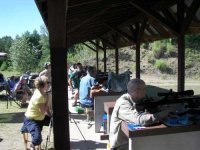CYanchycki
Club Coordinator
You will find attached photos of a roof design that my buddies home club is looking at errecting over there 14 bench firing line.
The concrete slab is 16'X86'. The plan is for the roof to be 15'X84' as in the picture.
The benches are back 4' from the front edge of the slab.
The thoughts are to have the roof edge start at 7' instead of 8' from the slab surface. The reasoning is to maybe aid in the ODD blowing rain storm. The benches are 6' on center. They are concrete tops with steel pipe feet I believe 6" in diameter.
There are a few concerns so I told my buddy I would ask the men who travel the US and shoot at various ranges.
1) What contributes more to seeing your rifle move point of aim when your neighbor shoots? Concussion from the rifle itself or the concussion bouncing off of the roof? So in other words ill the roof being a bit lower be a detriment?
or
is it how close your neighbor is to you?
or
if things are constructed properly you guys do not see that at ranges?
I am trying to help him out. This is a very SMALL club in North Eastern Ontario so money is not unlimited. They are trying to get it right the first time if there is a right. I did mention about possibly extending the front edge of the roof a bit but the concern is what effect will it have. I see to often at our home range when your neighbor fires your rifle shifts point of aim. You have to be very obsevent when your neighbor fires.
Thoughts gentlemen????????
Calvin




The concrete slab is 16'X86'. The plan is for the roof to be 15'X84' as in the picture.
The benches are back 4' from the front edge of the slab.
The thoughts are to have the roof edge start at 7' instead of 8' from the slab surface. The reasoning is to maybe aid in the ODD blowing rain storm. The benches are 6' on center. They are concrete tops with steel pipe feet I believe 6" in diameter.
There are a few concerns so I told my buddy I would ask the men who travel the US and shoot at various ranges.
1) What contributes more to seeing your rifle move point of aim when your neighbor shoots? Concussion from the rifle itself or the concussion bouncing off of the roof? So in other words ill the roof being a bit lower be a detriment?
or
is it how close your neighbor is to you?
or
if things are constructed properly you guys do not see that at ranges?
I am trying to help him out. This is a very SMALL club in North Eastern Ontario so money is not unlimited. They are trying to get it right the first time if there is a right. I did mention about possibly extending the front edge of the roof a bit but the concern is what effect will it have. I see to often at our home range when your neighbor fires your rifle shifts point of aim. You have to be very obsevent when your neighbor fires.
Thoughts gentlemen????????
Calvin







